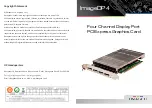
2. Shared Key: Shared Key authentication supports authentication of stations as either
a member of those who knows a shared secret key or a member of those who does
not.
Backbone:
The core infrastructure of a network, which transports information from
one central location to another where the information is unloaded into a local system.
Bandwidth:
The transmission capacity of a device, which is calculated by how
much data the device can transmit in a fixed amount of time expressed in bits per
second (bps).
Beacon:
A beacon is a packet broadcast by the Access Point to keep the network
synchronized. Included in a beacon are information such as wireless LAN service area,
the AP address, the Broadcast destination addresses, time stamp, Delivery Traffic
Indicator Maps, and the Traffic Indicator Message (TIM).
Bit:
A binary digit, which is either -0 or -1 for value, is the smallest unit for data.
Bridge:
An internetworking function that incorporates the lowest 2 layers of the OSI
network protocol model.
Browser:
An application program that enables one to read the content and
interact in the World Wide Web or Intranet.
BSS:
BSS stands for “Basic Service Set”. It is an Access Point and all the LAN PCs
that associated with it.
Channel:
The bandwidth which wireless Radio operates is divided into several
segments, which we call them “Channels”. AP and the client stations that it associated
work in one of the channels.
CSMA/CA:
In local area networking, this is the CSMA technique that combines
slotted time -division multiplexing with carrier sense multiple access/collision
detection (CSMA/CD) to avoid having collisions occur a second time. This works
best if the time allocated is short compared to packet length and if the number of
situations is small.
CSMA/CD:
Carrier Sense Multiple Access/Collision Detection, which is a LAN
access method used in Ethernet. When a device wants to gain access to the network, it
checks to see if the network is quiet (senses the carrier). If it is not, it waits a random
amount of time before retrying. If the network is quiet and two devices access the line
at exactly the same time, their signals collide. When the collision is detected, they
both back off and wait a random amount of time before retrying.
DHCP:
Dynamic Host Configuration Protocol, which is a protocol that lets network
administrators manage and allocate Internet Protocol (IP) addresses in a network.
Every computer has to have an IP address in order to communicate with each other in
a TCP/IP based infrastructure network. Without DHCP, each computer must be
entered in manually the IP address. DHCP enables the network administrators to





































